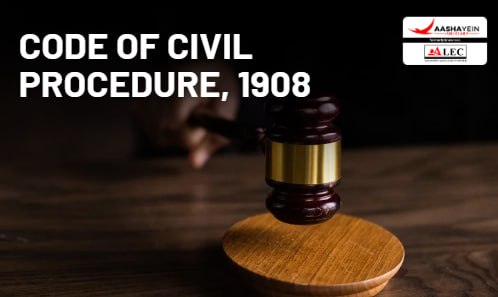A judgment is a crucial part of a civil lawsuit and is delivered before the court prepares a decree. The term "Judgment" is explained in Section 2(9) and Order 20 of the Code of Civil Procedure, 1908. According to Section 2(9) of the Code, a judgment includes the facts of the case, the key issues, the evidence presented by both sides, and the court’s decision on those issues based on the evidence and arguments made.
Every judgment must contain a summary of the claims made by the parties, the issues raised, the court’s findings on each issue, the legal reasoning behind the decision (known as ratio decidendi), and the relief or remedy granted by the court. Every day, courts deliver many judgments and resolve numerous cases. Judgments are extremely important for the judicial system because they serve as precedents, guiding future cases with similar legal questions.
When a judge delivers a judgment, they always provide the reasons for their decision, ensuring transparency and clarity in the legal process.
You can also read the latest judgment by visiting [Latest Judgment].
For more information, visit [Aashayein Enquiry Section]
What Does "Pronouncement" Mean?
“Pronouncement” refers to an official public announcement. In the context of a court judgment, it means the formal declaration of the court's decision after a case has been heard.
When Does a Judgment Get Pronounced?
After the court has finished hearing the arguments and submissions from both parties (or their lawyers), the judge will announce the judgment. This announcement can happen in one of two ways:
- Immediately: The judgment is announced right after the hearing concludes.
- On a Future Date: The judgment is reserved and announced later, but the parties or their lawyers must be given proper notice of the date.
Time Limit for Pronouncing a Judgment
If the judgment is not announced immediately, it must be pronounced within 30 days from the date the hearing concludes. However, in exceptional cases—such as bank holidays, strikes, or other unforeseen circumstances—the court may extend this period to 60 days.
How Is the Judgment Pronounced?
The judge is not required to read out the entire judgment in court. Instead, it is sufficient for the judge to announce only the final order or decision. After the pronouncement, the judge must:
- Sign the judgment.
- Include the date on which the judgment was pronounced.
Judge’s Power to Pronounce a Pre-Written Judgement
Rule 2 of Order XX of the Code of Civil Procedure (CPC), 1908, allows a judge to pronounce a judgement that was already written by a previous judge but not officially announced. Before the 1976 Amendment Act, there was no specific time limit between hearing the arguments and announcing the judgement. However, after the amendment, a time limit was introduced to address concerns about delays in delivering judgements, which were being reported from across India.
Copy of the Judgement
Once a judgement is pronounced, the court must provide copies of it to the parties involved. The parties requesting the copy must pay the required fees, as determined by the High Court rules. This provision is outlined in Order XX, Rule 6-B of the CPC, 1908.
Contents of a Judgement
According to Rule 4 of Order XX, the contents of a judgement depend on the type of court:
- For Courts of Small Causes:
The judgement is considered valid if it includes:
- The points for determination (key issues), and
- The decision on those points.
- For Other Courts
- The judgement must contain the following details:
-
- Summary of Pleadings: A brief overview of the case.
- Issues: The specific points that need to be resolved.
- Findings on Each Issue: The court’s decision on each point.
- Ratio Decidendi: The reasoning behind the decision.
- Remedy: The relief or solution granted to the parties.
Alteration of a Judgment
Once a judgment is finalized by being dated and signed by a judge, it can only be changed or corrected under specific circumstances. These circumstances are limited to the following:
- Arithmetical or Clerical Errors:
-
-
-
- Arithmetical Errors: These are mistakes related to numbers, such as errors in addition, subtraction, multiplication, or division.
- Clerical Errors: These are mistakes made by court staff (like clerks) while preparing or recording the judgment.
-
-
-
- Errors Due to Accidental Slips or Omissions:
-
-
-
- These occur when something important is unintentionally left out or overlooked in the judgment.
-
-
-
The legal provisions that allow for such corrections are:
-
-
-
- Section 152 of the Code of Civil Procedure (CPC): This section permits the court to correct clerical or arithmetical mistakes or errors arising from accidental slips or omissions.
- Section 114 of the CPC: This section allows for a "review" of the judgment, which means the court can re-examine its decision under specific conditions.
-
-
In summary, once a judgment is signed and dated, it can only be altered to fix minor mistakes like calculation errors, clerical errors, or accidental omissions. Any other changes are not permitted.

